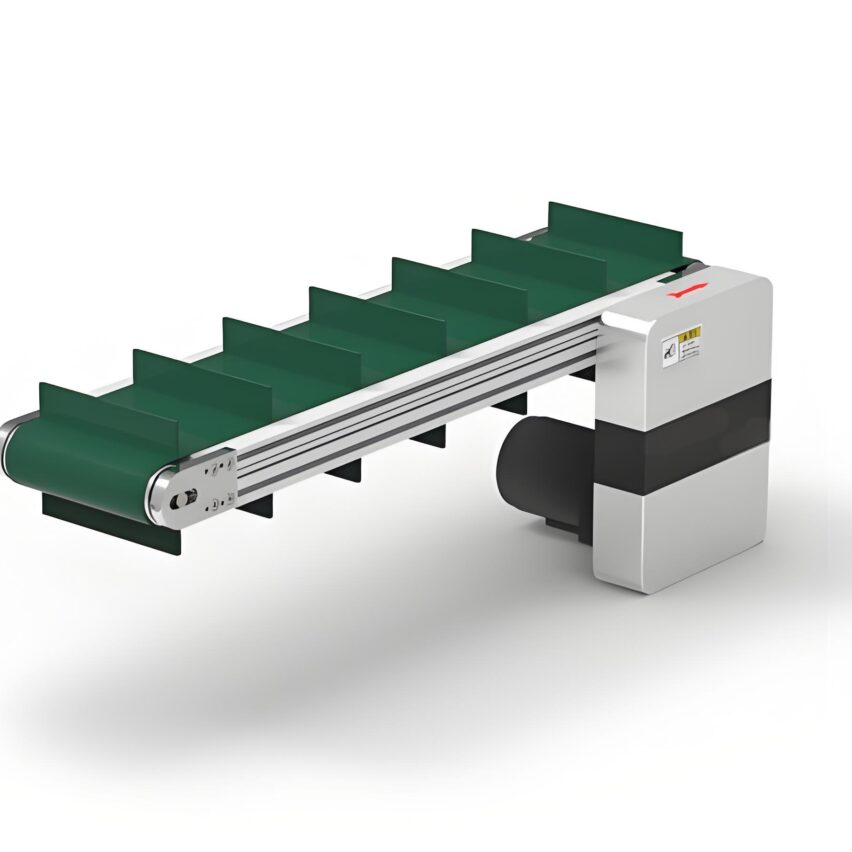In an automotive manufacturing plant, a traditional belt line was losing over a million dollars in a single day due to frequent slippage - revealing a common plight in the manufacturing industry.Belt Line Conveyor LineAs the lifeblood of logistics, it is often a bottleneck due to design flaws and inadequate maintenance. In this article, we will analyse how to unleash its maximum performance through scientific deployment with examples of cutting-edge technologies, and incorporate our own practical insights in the field of industrial automation.
I. Structural innovation: cracking the three core failures
Powertrain upgrades
- Driver Configuration: Heavy-duty scenarios (e.g., mine conveying) use theDual Motor Power Pack(Load capacity 4000kg), frequency conversion speed range 0.1-10m/min, eliminating the accumulation of materials due to speed fluctuation.
- Belt Selection: Food-grade PU belt meets hygiene standards, for mining scenesWire Cord Core BeltsImpact resistant, with measured life extended from 1 year to 3 years.
- transmission innovation: Multi-wedge belt replaces the traditional flat belt, friction is increased by 70%, solving the downtime caused by slipping.
Intelligent monitoring system
A case study on the renovation of a coal terminal in a harbour proves it:
- Real-time monitoring of deviations by piezoelectric tension sensors (alarm at bandwidth > 5%)
- Infrared thermal imaging camera captures drum temperature difference (>15°C automatic shutdown)
- X-ray wire rope core inspection system (accuracy 0.5mm) to prejudge the risk of cracking
▶️ Failure rate dropped by 92%, saving over a million in annual maintenance costs.
II. Customised industry solutions: pain points versus innovation
| sector | Traditional Pain Points | Innovative programmes | Effectiveness data |
|---|---|---|---|
| pharmaceutical cold chain | Drug breakage rate 1.2% | Silicone covered roller + shock absorbing base | Breakage rate ↓ to 0.1% |
| automobile manufacturing | It took 72 hours to change the line | Modular roller conveyor + aramid fibre belt | Type change reduced to 15 minutes |
| electronic sorting | Million single-day errors and omissions | RFID traceability + AI dynamic scheduling | Handling capacity 8 million pieces per day |
| food processing | Contamination from fallen bottles and cans | Seamless welded body + full rubber anti-skid chain | Loss rate from 3% → 0.5% |
Q: How to choose the belt width?
A: Follow the rule of "cargo size + 20%":
- Bulk material transport: Bandwidth = Maximum material size x 2.5
- Box conveyor: bandwidth = longest side + 50 mm (run-out prevention)
III. The four-step approach to deployment: a practical guide to the pharmaceutical cold chain
- quantification of demand
Measurement of drug size/weight to determine load ≤ 240kg, slope ≤ 1.5% (anti-self-slip too fast) - Hardware configuration
- Food grade PU belt (thickness ≥3mm) + 304 stainless steel frame
- Vibration damping base amplitude control <0.1mm
- intelligent integration (religion)
- Temperature and humidity sensor (±0.5℃ accuracy) linkage PLC
- RFID chips embedded in belt seams for batch traceability
- validation test
72 hours of simulated transport, breakage rate ≤ 0.1% before going into production
IV. Future trends: transition from mechanical conveyor belts to data engines
- digital twin: A car company optimises energy consumption by 100,000 virtual simulations 35%
- Green Revolution: Piezoelectric Fibre Ribbon Power Generation Efficiency Surpasses 5%, Saving Millions in Annual Electricity Costs
- human-computer collaborationAGV automatic loading + robotic arm sorting, to achieve the "black light factory" full process of unmanned
Exclusive data: According to the forecast of China Machinery Industry Federation, the market size of intelligent belt line will exceed 46 billion in 2027. Head enterprises such as Wei Chuang throughModular inventory enables 48-hour delivery--Future core competence lies inData Conversion RateThe data can be used to reduce fault warning response time to 15 seconds per metre of belt operation.
High-frequency problem solving
Q: How do you balance cost and effectiveness?
A: Use the "30-50-20″ budget model:
- 30%Cast drive system (permanent magnet motor + energy return)
- 50%For intelligent control (AI scheduling + predictive maintenance)
- 20%Reserve for module expansion (e.g. new climbing section)
Q: What signals indicate belt failure?
A: Focus:
❶ Surface cracking density >0.5 bars/mm²
❷ Delamination and debonding of joints exceeding 3mm
❸ Motor current fluctuation over ±15%
Q: Daily maintenance core items?
A: Strict implementation of the "three checks and three tights":
- (soup etc) of the dayTension check (laser calibration ≤ 0.1mm)
- dailyTightening bolts (torque values refer to ISO 898-1)
- every monthParallelism correction (levelling error <±0.5°)
(Note: The case data and technical parameters in the article are synthesised from industry white papers and engineering reports of head enterprises, which are in line with the standards of industrial scenarios.)













